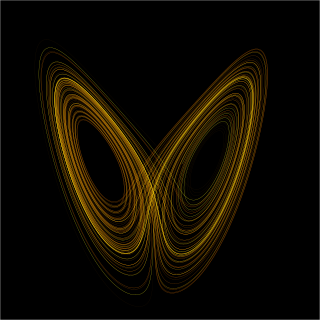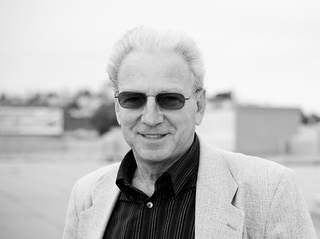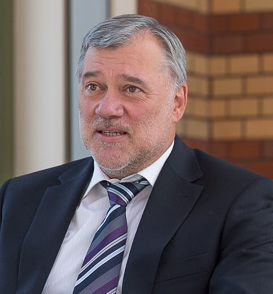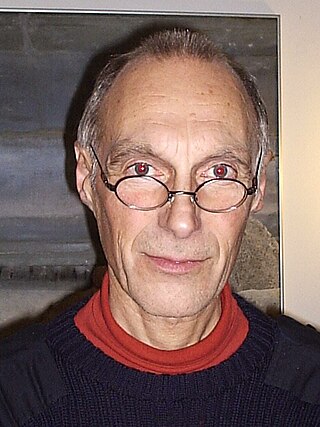Career
1964 - Graduated from the Department of Physics, Faculty of Science, Kyoto University
1969 - Left the Doctoral Course of the Graduate School of Science, Kyoto University, after earning the required credits. Assistant at the Faculty of Science, Kyushu University
April 1976 - Associate Professor, Faculty of Science, Kyoto University
April 1981 - Professor at the Research Institute for Fundamental Physics, Kyoto University
April 1985 - Professor, Faculty of Science, Kyoto University
1995 - Professor, Graduate School of Science, Kyoto University 2004 ** Retired from Kyoto University and became an Emeritus Professor of Kyoto University. Specially Appointed Professor, Hokkaido University COE
2005 - Received the Asahi Prize for his pioneering research on nonlinear science, such as synchronization phenomena. [2]
2008 - Visiting Professor, Research Institute for Mathematical Sciences, Kyoto University (Itoh Kiyoshi Doctor Gauss Prize Award Memorial (Nomura Group) Mathematical Analysis Contribution Research Division)
2013 - Deputy Director, International Institute for Advanced Studies (until March 2017)
Major works
Chemical Oscillations, Waves, and Turbulence Springer-Verlag, 1984 (Reissued by Dover publications in 2003)
"Iwanami Lectures: The World of Physics, Statistical Mechanics 1: Bridging Micro and Macro—Thoughts on Heat and Statistical Mechanics" (Iwanami Shoten, 2002) "
New Natural Science—The Potential of Nonlinear Science" (Iwanami Shoten, 2003) Chikuma Gakugei Bunko, 2016
"Nonlinear Science" (Shueisha Shinsho, 2007)
"Nonlinear Science: Synchronizing World" Shueisha Shinsho 2014
Co-authored works
"Pattern Formation" co-authored with Michio Yamada, Shigeru Shinomoto, Kyoji Kawasaki, Shoichi Kai (Asakura Publishing, 1991)
"Iwanami Lectures: Modern Physics Vol.15, Dissipative Structures and Chaos" co-authored with Hajime Mori (Iwanami Shoten, 1994)
Dissipative Structures and Chaos co-authored with Hajime Mori; translated by Glenn C. Paquette. Springer c1998.
"The World of Rhythm Phenomena" Editor (Tokyo University Press, Nonlinear and Non-equilibrium Phenomena of Mathematics, 2005)
"Mathematics of Synchronization Phenomena: Approach by Phase Description" co-authored with Hiroshi Kawamura (Baifukan, Nonlinear Science Series, 2010)

Dynamical systems theory is an area of mathematics used to describe the behavior of complex dynamical systems, usually by employing differential equations or difference equations. When differential equations are employed, the theory is called continuous dynamical systems. From a physical point of view, continuous dynamical systems is a generalization of classical mechanics, a generalization where the equations of motion are postulated directly and are not constrained to be Euler–Lagrange equations of a least action principle. When difference equations are employed, the theory is called discrete dynamical systems. When the time variable runs over a set that is discrete over some intervals and continuous over other intervals or is any arbitrary time-set such as a Cantor set, one gets dynamic equations on time scales. Some situations may also be modeled by mixed operators, such as differential-difference equations.

In the study of dynamical systems, the van der Pol oscillator is a non-conservative, oscillating system with non-linear damping. It evolves in time according to the second-order differential equation
The Kuramoto model, first proposed by Yoshiki Kuramoto, is a mathematical model used in describing synchronization. More specifically, it is a model for the behavior of a large set of coupled oscillators. Its formulation was motivated by the behavior of systems of chemical and biological oscillators, and it has found widespread applications in areas such as neuroscience and oscillating flame dynamics. Kuramoto was quite surprised when the behavior of some physical systems, namely coupled arrays of Josephson junctions, followed his model.
In dynamical systems theory, a period-doubling bifurcation occurs when a slight change in a system's parameters causes a new periodic trajectory to emerge from an existing periodic trajectory—the new one having double the period of the original. With the doubled period, it takes twice as long for the numerical values visited by the system to repeat themselves.
Synchronization of chaos is a phenomenon that may occur when two or more dissipative chaotic systems are coupled.

Charles Rogers Doering was a professor of mathematics at the University of Michigan, Ann Arbor. He is notable for his research that is generally focused on the analysis of stochastic dynamical systems arising in biology, chemistry and physics, to systems of nonlinear partial differential equations. Recently he had been focusing on fundamental questions in fluid dynamics as part of the $1M Clay Institute millennium challenge concerning the regularity of solutions to the equations of fluid dynamics. With J. D. Gibbon, he notably co-authored the book Applied Analysis of the Navier-Stokes Equations, published by Cambridge University Press. He died on May 15, 2021.
Stephen Ray Wiggins is a Cherokee-American applied mathematics researcher and distinguished educator, also of British heritage, best known for his contributions in nonlinear dynamics, chaos theory and nonlinear phenomena. His wide contributions include Lagrangian aspects of fluid dynamics and reaction dynamics in theoretical chemistry.
Roger Meyer Temam is a French applied mathematician working in numerical analysis, nonlinear partial differential equations and fluid mechanics. He graduated from the University of Paris – the Sorbonne in 1967, completing a doctorate under the direction of Jacques-Louis Lions. He has published over 400 articles, as well as 12 books.

Mikhail Izrailevich Rabinovich (MIR) is a Russian influential physicist and neuroscientist working in the field of nonlinear dynamics and its applications. His work helped shape the understanding of dynamical systems.

Jürgen Kurths is a German physicist and mathematician. He is senior advisor in the research department Complexity Sciences of the Potsdam Institute for Climate Impact Research, a Professor of Nonlinear Dynamics at the Institute of Physics at the Humboldt University, Berlin, and a 6th-century chair for Complex Systems Biology at the Institute for Complex Systems and Mathematical Biology at Kings College, Aberdeen University (UK). His research is mainly concerned with nonlinear physics and complex systems sciences and their applications to challenging problems in Earth system, physiology, systems biology and engineering.
Ioannis George (Yannís) Kevrekidis is currently the Bloomberg Distinguished Professor in Chemical and Biomolecular Engineering within the Whiting School of Engineering, Johns Hopkins University. He holds secondary appointments in the Whiting School's Department of Applied Mathematics & Statistics and the Johns Hopkins University School of Medicine's Department of Urology.

John Michael Tutill Thompson, born on 7 June 1937 in Cottingham, England, is an Honorary Fellow in the Department of Applied Mathematics and Theoretical Physics at the University of Cambridge. He is married with two children.

In mathematics, the Kuramoto–Sivashinsky equation is a fourth-order nonlinear partial differential equation. It is named after Yoshiki Kuramoto and Gregory Sivashinsky, who derived the equation in the late 1970s to model the diffusive–thermal instabilities in a laminar flame front. The equation was independently derived by G. M. Homsy and A. A. Nepomnyashchii in 1974, in connection with the stability of liquid film on an inclined plane and by R. E. LaQuey et. al. in 1975 in connection with trapped-ion instability. The Kuramoto–Sivashinsky equation is known for its chaotic behavior.
Muthusamy Lakshmanan is an Indian theoretical physicist currently working as Professor of Eminence at the Department of Nonlinear Dynamics of Bharathidasan University. Presently he is the DST-SERB National Science Chair awarded by the Science and Engineering Research Board, Department of Science and Technology. He has held several research fellowships which included Raja Ramanna fellowship of the Department of Atomic Energy, Alexander von Humboldt fellowship, Japan Society for the Promotion of Science fellowship, Royal Society Nuffield Foundation fellowship, and NASI-Senior Scientist Platinum Jubilee Fellowship. In the year 2021, on August 15, he was conferred with the Dr. A. P. J Abdul Kalam Award by the Government of Tamil Nadu.

Igor Dmitrievich Chueshov was a Ukrainian mathematician. He was both a correspondent member of the Mathematics section of the National Academy of Sciences of Ukraine and a professor in the Department of Mathematical Physics and Computational Mathematics at the National University of Kharkiv.
Phase reduction is a method used to reduce a multi-dimensional dynamical equation describing a nonlinear limit cycle oscillator into a one-dimensional phase equation. Many phenomena in our world such as chemical reactions, electric circuits, mechanical vibrations, cardiac cells, and spiking neurons are examples of rhythmic phenomena, and can be considered as nonlinear limit cycle oscillators.

Darryl Holm is an American applied mathematician, and Professor of Applied Mathematics and Mathematical Physics in the Department of Mathematics at Imperial College London. He studied Physics at the University of Minnesota (1963-1967), and Physics and Mathematics at the University of Michigan (1967-1971). He joined the Theoretical Design Division of Los Alamos National Laboratory (LANL) in 1972 where he worked on the physics of strong shock waves and high-temperature hydrodynamic phenomena. At LANL Darryl also wrote his PhD dissertation entitled "Symmetry breaking in fluid dynamics: Lie group reducible motions for real fluids", receiving his PhD in 1976, supervised by Roy Axford. A result discovered in this work was later used to substantiate the accuracy of the Los Alamos on-site yield verification method (CORRTEX) for the US-USSR Threshold Test Ban Treaty (TTBT). In 1980, Darryl moved to the Theoretical Division, where he helped found the Center for Nonlinear Studies and served as one of its acting directors.

Hans J. van Ommeren Dekker is a Dutch theoretical physicist in the line of Dirk Polder, Ralph Kronig, and Nico van Kampen. His scientific work inter alia involves laser theory, path integrals in curved spaces, nonequilibrium statistical mechanics, dissipation in quantum mechanics, and hydrodynamic turbulence. He is director of the Private Institute for Advanced Study and professor emeritus at the Institute for Theoretical Physics of the University of Amsterdam.
Aneta Stefanovska is a Macedonian-born, Slovenian-British biophysicist. She is a professor of physics at Lancaster University.









